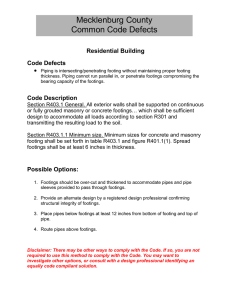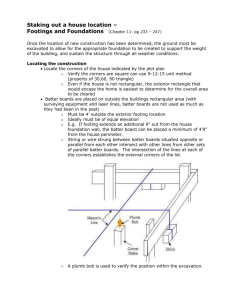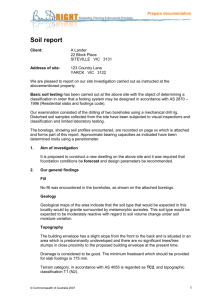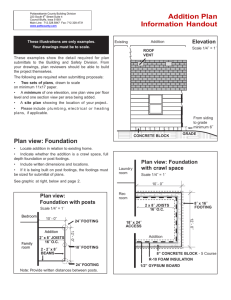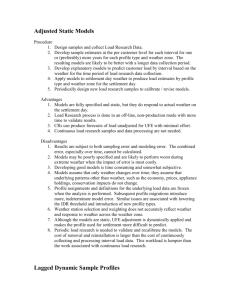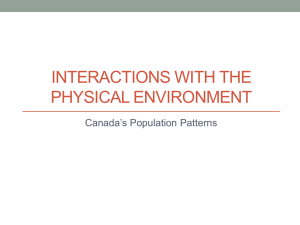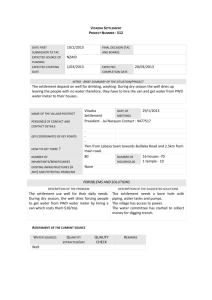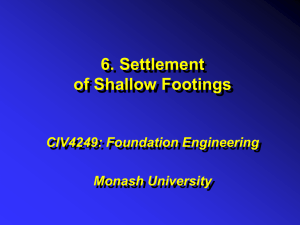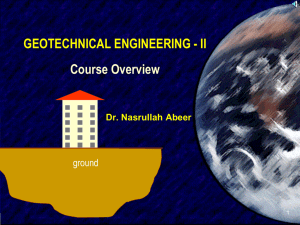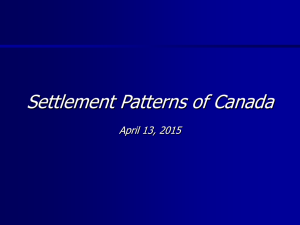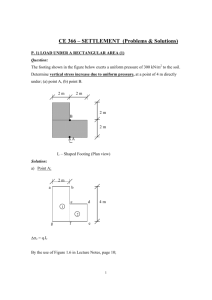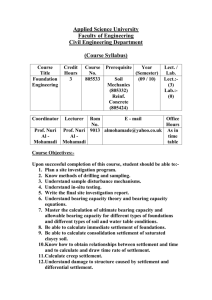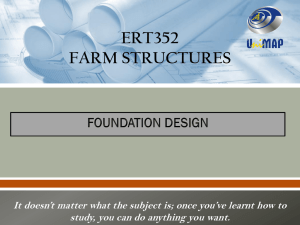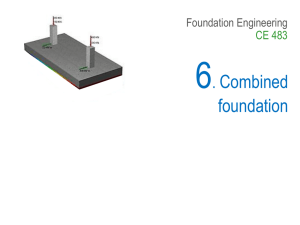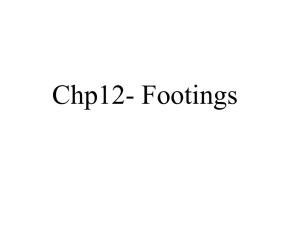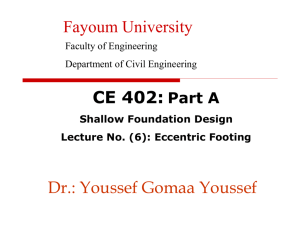Boussinesq formulae for the vertical stress increment Sigmaz
advertisement
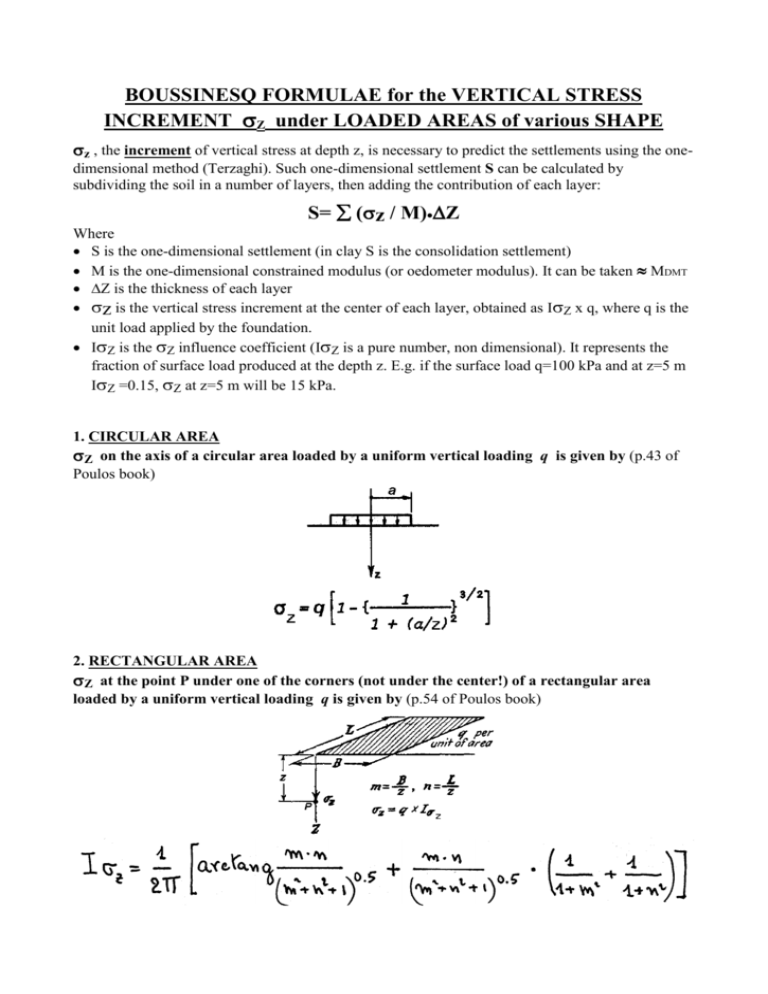
BOUSSINESQ FORMULAE for the VERTICAL STRESS INCREMENT Z under LOADED AREAS of various SHAPE z , the increment of vertical stress at depth z, is necessary to predict the settlements using the onedimensional method (Terzaghi). Such one-dimensional settlement S can be calculated by subdividing the soil in a number of layers, then adding the contribution of each layer: S= (z / M)Z Where S is the one-dimensional settlement (in clay S is the consolidation settlement) M is the one-dimensional constrained modulus (or oedometer modulus). It can be taken MDMT Z is the thickness of each layer z is the vertical stress increment at the center of each layer, obtained as IZ x q, where q is the unit load applied by the foundation. IZ is the Z influence coefficient (IZ is a pure number, non dimensional). It represents the fraction of surface load produced at the depth z. E.g. if the surface load q=100 kPa and at z=5 m IZ =0.15, Z at z=5 m will be 15 kPa. 1. CIRCULAR AREA Z on the axis of a circular area loaded by a uniform vertical loading q is given by (p.43 of Poulos book) 2. RECTANGULAR AREA Z at the point P under one of the corners (not under the center!) of a rectangular area loaded by a uniform vertical loading q is given by (p.54 of Poulos book) NOTE m and n are the ratios L/z and B/z at the depth z where Z is to be calculated (m and n are interchangeable) If the above formula is incorporated in a PC program, it can be helpful to check the calculated IZ by comparing them with the IZ given by the Fadum diagram reproduced below. It must be kept in mind that the above formula calculates IZ under the corner (not under the center) of a rectangular area, while normally we are interested in the settlement under the center, where the settlement is maximum. Therefore the normal way to proceed to calculate the settlement under the center of a rectangular footing of dimensions LxB : a. Consider that the real footing is equivalent to the sum of the 4 adiacent footings, each having dimensions L/2 and B/2 (see Fig. below). b. Hence use the above formula using such reduced width and length of the 4 elementary footings, thus obtaining IZ under the corner of each of the elementary footings c. Since under the center O of the real footing concur 4 elementary footings, multiply by 4 the IZ obtained for the corner of one individual footing. OTHER COMMENTS If the foundation is not at ground surface but at a depth D, then the calculations - and the M profile to be used - start from depth D. In general the load q introduced in the calculations is the net increment , i.e. the load applied to the soil minus the weight of the excavated soil If the foundation (or footing) is rigid, then the settlement will be uniform, and less (typically 80%) than the value calculated above (which is the settlement under the center of a flexible foundation).

